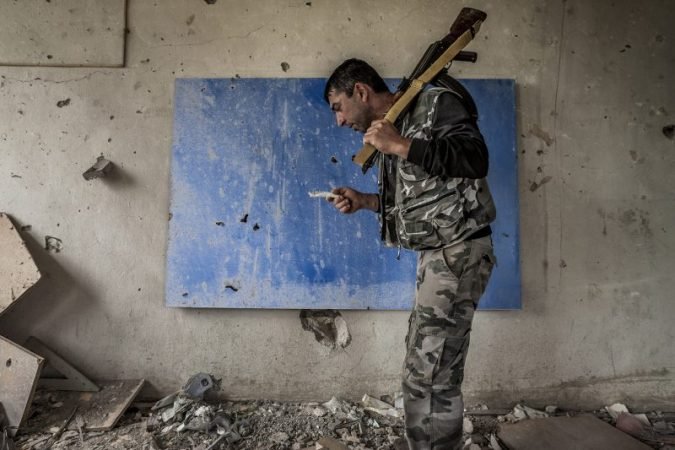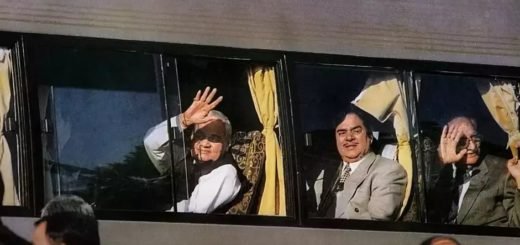Trans-Caucasian Turmoil – From USSR to Russia

When one thinks of USSR, subconsciously it dwells on the question of their authoritative policies, their ‘Fatherland’ and even their infamous leaders like Stalin. What isn’t given much of the public eye is the consequential effect its disintegration had on the Soviet States that broke away. Smooth transition of authority and power is an imperative determinant to mapping out the efficient functioning of the newly-founded Sovereigns. In the case of Eastern Europe and Central Asia, destructive turmoil was to follow as the Shock Therapy had detrimental effects not just on Russia, but the ex-SSRs as well. We simply cannot ignore the imperfect nature of the states, we cannot turn a blind eye to historical, cultural and moral conflicts that these new sovereigns may also have; but we did, because the western mainstream did extremely well to paint USSR as the antagonists, and also the Soviets didn’t do themselves any favours. In all honesty, the Soviets defeated themselves reviving liberal traditions of international affairs and leaving realist scholars dumbstruck who claimed the Bipolar cold war structure to be the most ideal and the ‘end of history’. The recent clash between Armenia and Azerbaijan is testament to the fact that these conflicts are a ticking time bomb and connections between what behaviours these clashes came out with ever since their emancipation is detrimental to understand how much of an effect the previous Socialist Regime had on them.

The response to any internal conflict by the Soviet Regime was either immediate suppression or mediation in convergence with their own interests, that’s primarily why all hell broke loose as soon as these breakaway states had their sovereignty in their own hands. The concept of ‘frozen conflicts’ arose which highlighted the fact that there were unsolved conflicts within the Soviet structure that was out in the open now. Moreover, many of these conflicts, like the Ossetia and Abkhazia conflict in Georgia were deemed ‘solved’ impulsively, even though they rose again in 2008 leading to significant bloodshed. The complacency of the international institutions was highlighted as these conflicts rose time and time again but no peace could ever be materialized.
The conflict between Armenia and Azerbaijan is over the Nagorno-Karabakh region which is internationally recognized as a part of the sovereign territory of Azerbaijan but consists of large communities who have intense sentiments of adjoining with Armenia due to their ethnicity, history and they also don’t identify themselves as a part of Azerbaijan. At the time of its inception, the Soviet Union roughly drew its boundaries and renamed the Tsarist labelled ‘Shushenkiy Uyezd’ as ‘Nagorno-Karabakh’ as a part of their Transcaucasian SFSR. In the 1920s there was already significant unrest between Armenia and Azerbaijan but, due to Turkish influence, Stalin included Nagorno-Karabakh with Azerbaijan for the sustenance of their own relations with Attaturk. This selfish interest was extremely highlighted with the March 1921 Treaty (Cornell, 1997)to decide upon Nagorno-Karabakh being a part of Azerbaijan as it was between Turkey and USSR only; it didn’t even properly involve the two direct stakeholders whose conflict it actually was. Nearing the end of the 1980s the Soviets of People’s Deputies of Nagorno-Karabakh even passed a resolution to request for the disputed area to be included with the Armenian Republic. The response by the Soviets was a major disappointment for the people of Armenia as they justified inaction with half-truths like avoiding ethnic conflicts and safeguarding interests of the Azerbaijanis. With the end of the Soviet Regime, the pressure created by the authoritarian tirade and suppression of voices was let loose into the air. Similar to this, another country that was left to fend for itself with all the built-up tension within them was Georgia. South and North Ossetians were at each other’s necks after the invasion of the Soviets. As a result, Ossetia was bisected with one half with the Soviets and the other with the autonomous Georgian SSR. The Soviet breakup happened in the early 1990s, and to no one’s surprise, out comes into the open a separatist nationalist leader at the helms of Georgia, which led to violence from the get-go. After the ceasefire agreement between Russia, Georgia and South Ossetia, it was deemed that this frozen conflict has come to an end, but it again came up in 2008 through the 5-day war which claimed around 800 lives (Independent International Fact-Finding Mission on the Conflict in Georgia, 2009)

There’s an interesting pattern about the conflicts of the ex-Soviet territories, they arise periodically time and time again. These conflicts are structured in a manner that even conscious agreements, settlements and ceasefires don’t ever solidify the endpoint of these conflicts. Like the Georgian conflict, The Nagorno Karabakh issue also arose in 2016 which is commonly referred to as the ‘four-day war’; and now again is at the threat of a full-scale war in the status quo. It seems like these Transcaucasian, Central Asian and East European conflicts are stuck in a never-ending cycle of the Thucydides Trap.
Through the aforementioned, it’s pretty evident that the Soviets had a big part to play in these conflicts and their perpetual nature, even though they aren’t their source. Thus, for aggravation and wrongful execution of management of conflict, Russia (the successor of the Soviet Union) is in a way morally obligated to facilitate peace within these conflicts. Their shared history and collective trauma can only stabilize these regions rather than aggravate them. Although, history proves against it as Russians played a huge part in the 2008 five-day war in Georgia and broke international law for invading other countries. However, it’s still important to note that while multilateral organizations have been redundant in any sort of mitigation in these areas, Russia has mediated between these conflicts bringing periodic relief and thus, marginally being more effective. Therefore, as interesting or eyebrow-raising the Russian diplomacy may be, it’s the only bet that appears to be working. The moral compass hangs over Russia pertaining to these conflicts and probably always will.



















